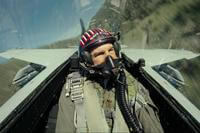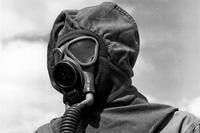The case was essentially a murder investigation. The suspect was in custody, and he'd even admitted to the killings; all investigators had to prove was that he was at the scene of the crime.
But the case wasn't that simple: The victims were two U.S. service members, the crime scene was a remote battlefield in Afghanistan, and the suspect was a self-described al-Qaida terrorist -- one who was also about to walk free if prosecutors couldn't prove their case.
In 2011, Ibrahim Suleiman Adnan Adam Harun boarded the Excelsior, a cruise ship filled with refugees fleeing Libya amid the chaos that followed the Arab Spring uprisings across the Middle East and North Africa. While bound for Italy, Harun proclaimed himself an al-Qaida fighter and attacked a contingent of Italian soldiers providing security aboard the vessel. He was apprehended and interrogated, where he claimed that he was a fighter named Spin Ghul and confessed to both killing Americans during a firefight in Afghanistan and plotting to bomb the U.S. Embassy in Nigeria.
With Ghul's confession in hand, the Italian government was ready to hand him over to the United States, but the Americans couldn't simply take him into custody. They needed to first build a solid case around his confession so he could be tried and convicted in an American criminal court. And they needed to do it fast: The Italians couldn't detain Ghul forever, and letting him go meant him disappearing into an archipelago of refugee camps and, potentially, committing further acts of terror.
CNN anchor Jake Tapper's new book "Race Against Terror: Chasing an Al-Qaeda Killer at the Dawn of the Forever War" traces the extraordinary efforts of American law enforcement officers and prosecutors as they gather evidence and build the case that would eventually put Ghul in prison for life.

It was during a birthday party for his son that Tapper first heard the story of Spin Ghul. Dave Bitkower, a lawyer who'd worked for both the U.S. Attorney's Office in the Eastern District of New York and the criminal division of the Department of Justice, was one of the parents in attendance. He told Tapper the story of the al-Qaida fighter captured aboard an Italian cruise ship and the complicated efforts it took to prove an entire case before taking the suspect back to the United States.
"I mean, it's just an incredible yarn, an incredible story," Tapper told Military.com. "I asked him, 'Has anybody ever written this?' He said no. There were a couple stories in The Washington Post about it or New York tabloids, but they just covered the trial. I covered the sleuthing part of it, and the sleuthing was the really interesting part of it because it's the opposite of a whodunit: Here's the bad guy, now prove that he did something bad -- and prove it for a court of law."
Ghul traveled to Afghanistan from Saudi Arabia to train in an al-Qaida camp just weeks before the Sept. 11, 2001, terror attacks. From there, he traveled to the Federally Administered Tribal Areas of Pakistan, where he began operating under one of Osama bin Laden's senior deputies. On April 25, 2003, he and his band of jihadists attacked a U.S. military patrol northeast of the Shkin Firebase, near the Afghan-Pakistan border. Two service members, 19-year-old Pfc. Jerod Dennis and 24-year-old Airman 1st Class Raymond Losano, were killed, and other Americans were seriously wounded in the firefight.

In 2004, al-Qaida sent Ghul from Pakistan to Nigeria with the mission of bombing the American embassy in Abuja. His network in that country was compromised after a courier was arrested in Pakistan, and he fled to Libya with the goal of moving into Europe but was arrested by Libyan security officers. He was imprisoned there until 2011, when the regime of Libyan dictator Muammar Gaddafi began to crumble. That's when he boarded the cruise ship and was apprehended by the Italians.
"He'd assaulted a couple of their military guys on that cruise ship, but they didn't have anything to really hold him on," Tapper said. "This was during a time when Europe in general and Italy specifically were getting very frustrated with the American Global War on Terrorism. It's a time of really fraught relations, so the Italians were holding onto him, but they wanted him out.
"It was pretty clear that if the Americans didn't take him, they would just send Spin Ghul to a refugee camp, which has minimal security. This guy whose life ambition was to kill as many Americans as possible would just walk out."
The clock was ticking for the United States and the FBI. They knew who Spin Ghul was and that he was an al-Qaida fighter, but they had to prove they could get a conviction in a U.S. criminal court before he could be extradited. The Obama administration was trying to prove that civilian courts could successfully try terrorists, as opposed to the military commissions at Guantanamo Bay, but that effort was challenging.
Another al-Qaida operative, Ahmed Khalfan Ghailani, was tried on 280 different charges after being captured in Pakistan in 2004. In 2010, a jury acquitted him of all but one of those charges. He was found guilty of conspiring to bomb the U.S. Embassies in Kenya and Tanzania, a conviction that earned him a life sentence -- and if it hadn't been for that one conviction, he would have walked free in New York.
"That really sends a shiver through the spine of everybody following this, because they think, 'What happens if we bring this guy over and an American jury just decides he's crazy, there's no evidence, and they just let him free?'" said Tapper. "We need evidence, and a confession is not enough."
The captured fighter in the Global War on Terrorism then became part of a murder investigation by the FBI and U.S. Attorney's office. Investigators had to place Ghul at the battlefield near Firebase Shkin, in Afghanistan's Paktika Province, in one of the earliest firefights of the war. The Americans also had to find Guhl's journal (and someone who knew where it was), his copy of the Quran taken from the battlefield by one of the U.S. troops there (and the troop who took it) and find proof that Guhl was actually there, which they did with the help of a "red-haired fingerprint expert at Quantico."
"The fascinating part of his story is the sleuthing by the FBI and by the U.S. Attorney's office, and as reporters, we don't really get to cover that part," Tapper said. "We just see what evidence they have in court. We don't know how they get that evidence.
"I think this is the only case of a terrorist being tried in court for killing American soldiers on a battlefield," Tapper continued. "That's the other thing that made it so interesting. There's only one bad guy in this book. Here's this bad guy. He can't be let free. He's very clearly a murderer who wants to become a mass murderer with legitimate bonafides. I think it's an incredible amount of detective work that these prosecutors and investigators did."
"Race Against Terror: Chasing an Al-Qaeda Killer at the Dawn of the Forever War" hits bookshelves in October 2025. It is available for pre-order now at Simon and Schuster.
Keep Up With the Best in Military Entertainment
Whether you're looking for news and entertainment, thinking of joining the military or keeping up with military life and benefits, Military.com has you covered. Subscribe to the Military.com newsletter to have military news, updates and resources delivered straight to your inbox.

















